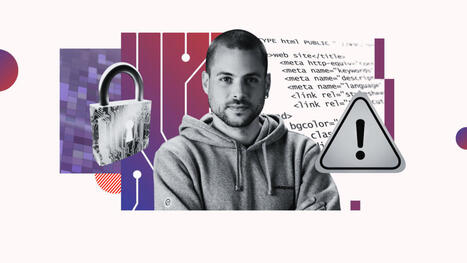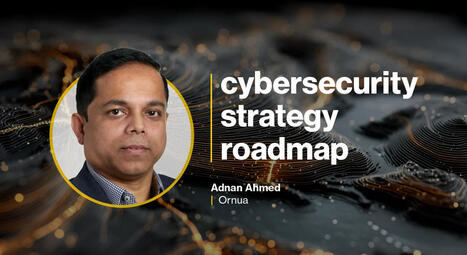The increase of chief trust officers signals a shift from defending systems to safeguarding credibility. Understanding what the CTrO stands for may see CISOs finding a new calling.
Get Started for FREE
Sign up with Facebook Sign up with X
I don't have a Facebook or a X account

 Your new post is loading... Your new post is loading...
 Your new post is loading... Your new post is loading...
With the cost of cyber attacks clearer than ever before, how can CISOs use this data to convince boards that cybersecurity is worth the investment?
Boards are rethinking cybersecurity as a core business strategy, focusing on AI governance, risk management, and edge defense.
A global survey of 1,773 C-level executives, security professionals and security and technical directors finds nearly all (95%) are confident in their ability to recover from a ransomware attack.
Security leaders must ensure their security strategies and teams support the organization’s overall business strategy. Here’s what that looks like in practice — and why it remains so challenging.
From
www
Employing many disparate security solutions undercuts your overall security. Platformization cuts detection/containment times and saves cost.
AI's explosive growth has lifted cybersecurity to the top of the board's agenda. Here's how CISOs can seize the moment, according to Diana Kelley.
The path to a stronger national security posture lies in mastering the fundamentals that are too often neglected and establishing a proactive security program to anticipate and counter threats.
As AWS hires a new VP to address rising AI challenges in cybersecurity, IT leaders are reckoning with a landscape that requires new skills -- and maybe new management.
Understanding how CISOs navigate noise, trust peers, and make buying decisions
A new hybrid leadership role is emerging that combines the technical rigor of a CISO with the legal acumen of a data protection officer. Enterprises can create an ecosystem where security and privacy reinforce each other, and organizations can foster collaboration and build trust.
Companies adopt AI quickly but lack security teams, leaving them exposed to growing AI-driven cyber risks that need urgent, proactive defense.
From
www
The lesson from the Jaguar Land Rover cyberattack is simple but sobering: in today’s economy, supply-chain resilience and cybersecurity are inseparable. |
Effective cybersecurity strategy starts with aligning risk to business goals. Build a roadmap that drives resilience, not just compliance.
Combine structured frameworks with a customizable assessment model to turn strategic fog into prioritized remediation plans with the most value.
In many organizations today, when the CISO talks, the CEO and board listen. CISOs who successfully rise to the occasion have broad skillsets.
The "black swan" question is getting harder to ignore, says MSIG USA cyber head
An interview with global cybersecurity thought-leader JC Gaillard on his new book: “The First 100 Days of the New CISO – A Leadership Guide to Lasting Impact”
How to defend your cybersecurity budget using a quantitative, economic approach—moving from perceived liability to a mechanism for preserving enterprise value.
CISO-CEO tension and unclear authority under duress are imperiling incident response. CISOs must establish not only clear response plans but also leadership alliances centered on business value, advisors say.
Tasked with increasing responsibilities and oversight, CISOs are seeking ways to expand cyber capabilities with AI, while piloting new tools, enlisting more partners, and finding ways to stretch their budgets further, according to CSO’s Security Priorities Study.
Ransomware has evolved from encryption to data theft. Learn how AI-driven attacks and breach data are reshaping cyber insurance risk models and pricing.
Security leaders are taking on bigger roles, adding new responsibilities, and gaining influence across the business, new research finds.
Security experts believe many cyber tabletops try to be too specific, while others argue they should focus on smaller, more nuanced attacks, as those are more likely what security teams will face.
Like technical debt, security debt accumulates quickly, due to unpatched software, rushed security testing and poor visibility. When the bill comes due, it could mean a breach. |

































